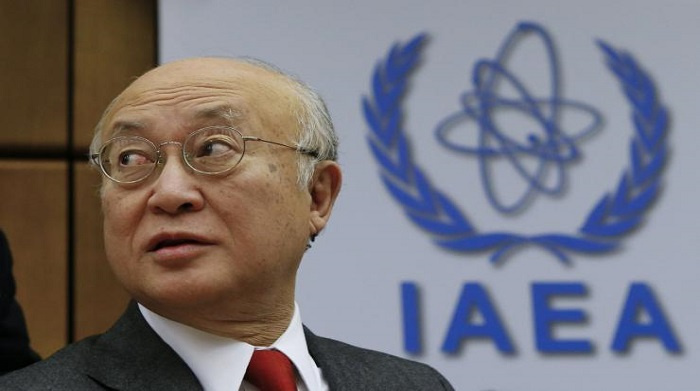Results of Amano’s Iran Report

Following Amano’s report which was presented last Wednesday, the path for the implementation of the Joint Comprehensive Plan of Action agreed between Iran and the P5+1 is now clear.
Abbas Araghchi, a senior Iranian nuclear negotiator, has said that this report is “neither white, nor black” but has described it as closer to white.
Amano’s new report, which is an inseparable part of the JCPOA, will be the basis of a resolution which is to be issued by the IAEA Board of Governors with regard to Iran’s nuclear dossier.
The point that the US, as the most important member of the P5+1 countries, has welcomed Amano’s report and the statements made by the State Department’s spokesperson who said that the IAEA report has responded to the remaining questions and ambiguities regarding Iran’s nuclear program and that the US and the other five countries which were involved in the nuclear negotiations will agree with the closeness of this case in the meeting to be held on December 15th, are another reason for the unity of views and analyses of all parties in the implementation of the agreement which was reached between Iran and the P5+1.
Since 2009, when Amano became responsible for the most important international organization working on nuclear energy, this is the first positive report about Iran’s nuclear program. The reason behind his 180-degree turn and this report is two years of negotiations between Iran and the P5+1 and the agreement reached. Amano’s latest report proves the viewpoint of those experts who believed from the beginning that Iran’s nuclear dossier is political and it could only be closed through political means. It might be said that all officials who were involved in this case during the last twelve years had a similar opinion. I believe that there was no difference between all negotiators in the political nature of the nuclear case but there was a difference in the path to resolve this problem. This was due to the differences in the viewpoints and analyses of Iran’s capabilities and the capacities of the other side and misunderstandings of the previous negotiators regarding the effective international elements in national decisions. These differences caused eight years of losses and the transformation of this subject into threats and the adoption of the Security Council resolutions and imposition of crippling sanctions against Iran which created obstacles for Iran’s sale of oil. Due to these sanctions, the gates for international trade were closed for Iran and people’s needs were provided through professional dealers instead of official international channels. In one word, Iran’s economy and people’s daily lives were faced with serious problems. This essay does not intend to tackle the issue of whether this path could be avoided or not.
In summary, it must be pointed out that an accurate understanding of the sensitivity of this path by the Supreme Leader, the golden opportunity of the 2013 presidential elections and people’s ‘yes’ vote to Rohani and pursuing the strategy of “heroic flexibility” along with the approach of interaction with the world directed the train of nuclear talks towards the right path.
Amano’s report is the result of these three factors and the 22 months of negotiations between Iran and the P5+1.

